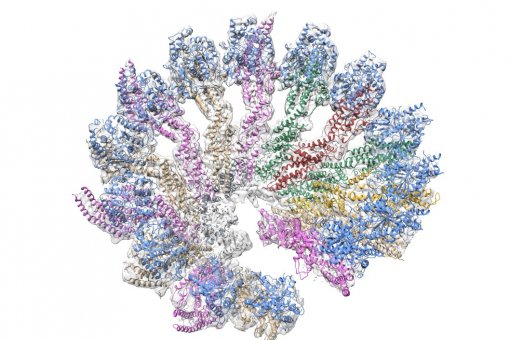Images
Contact

The compound stimulates the growth of damaged axons in mouse neurons in vitro.
Axons are prolongations of neurons along which the nerve signals that allow neuron-neuron connections travel and also which allow the execution of instructions from the brain to muscles. One of the main problems of the adult central nervous system (CNS) is its incapacity to regenerate axons after lesion. A team of researchers, including scientists at the CSIC and the UB, coordinated by the Institute for Research in Biomedicine (IRB Barcelona) have identified a new chemical compound that allows the regeneration of injured neuronal axons in the adult CNS. The researchers propose that this substance is of interest in the design of new drugs that stimulate the axonal regeneration required, for example, in spinal cord injuries after an accident. The results of the study have been published today in the online version of Chemistry and Biology, a journal that belongs to the Cell group and that specializes in biochemistry.
Spinal injuries are the main example of a CNS lesion. Each year, approximately 1000 people in Spain suffer injuries of this kind and as a result have serious motor, sensorial and cognitive impairment. Eduardo Soriano, head of the Developmental Neurobiology and Regeneration Lab at IRB Barcelona and full professor at the UB, studies the functions of genes and molecules that regulate the recovery of neuronal development programmes in adults. Soriano explains, "we have identified a chemical compound that acts specifically against a molecule that inhibits axonal growth both during embryo development and in adults." The principal author of the study is Marisol Montolio, a scientist at IRB Barcelona. The work has also involved the participation of researchers that form part of Ángel Messeguer’s Group at the "Institut de Química Avançada de Catalunya" (IIQAB), which belongs to the Spanish Higher National Research Council (Consejo Superior de Investigaciones Científicas), and José Antonio del Río, at IRB Barcelona (currently at IBEC) and the UB.
Knocking down chemicals barriers
During embryo development, axons grow to a certain length, guided by a series of molecules. One of these is Semaphorin 3A (Sema3A), which acts as a chemical barrier and prevents the axon from moving to where Sema 3A is expressed. In addition to acting as a barrier, Sema 3A also stimulates the axon to move in the opposite direction. In its natural function in development, Sema 3A inhibits molecular axonal growth signals and is crucial to establish an appropriate growth direction. When the nervous system has formed, the expression of this molecule in the body is very low, but when an injury occurs its expression increases greatly. In this context, the action of Sema3A, together with that of other molecules, impedes axonal regeneration. To fight against Sema 3A, researchers have produced SICHI (Semaphorin Induced Chemorepulsion Inhibitor), which incapacitates the molecule in the event of an injury. Once the chemical barrier has been removed, the axon can form a new growth cone and can grow towards its correct target.
The researchers have identified SICHI from a library of 10,648 molecules. SICHI prevents Sema 3A from binding to its cell receptor and inhibits the cascade of later events that hinder axonal elongation. In addition to describing the biological action of SICHI, the scientists have also revealed that the optimum doses to obtain maximum efficiency of the compound without causing cell death are low enough to render SICHI of pharmaceutical relevance.
Soriano warns "there is a long way to go between the basic research in labs and achievement of a viable drug for the treatment of spinal cord lesions." The experiments have been performed in mouse neurons in vitro. The next step will be to test whether Sema 3A acts in the same way in model systems in vivo, preferably in mice.
Reference article:
A Semaphorin 3A Inhibitor Blocks Axonal Chemorepulsion and Enhances Axon Regeneration.
Marisol Montolio, Joaquim Messeguer, Isabel Masip, Patricia Guijarro, Rosalina Gavin,
José Antonio del Río, Angel Messeguer, and Eduardo Soriano.
Chemistry & Biology. Available online 16 July 2009. doi:10.1016/j.chembiol.2009.05.006
About IRB Barcelona
The Institute for Research in Biomedicine (IRB Barcelona) pursues a society free of disease. To this end, it conducts multidisciplinary research of excellence to cure cancer and other diseases linked to ageing. It establishes technology transfer agreements with the pharmaceutical industry and major hospitals to bring research results closer to society, and organises a range of science outreach activities to engage the public in an open dialogue. IRB Barcelona is an international centre that hosts 400 researchers and more than 30 nationalities. Recognised as a Severo Ochoa Centre of Excellence since 2011, IRB Barcelona is a CERCA centre and member of the Barcelona Institute of Science and Technology (BIST).





